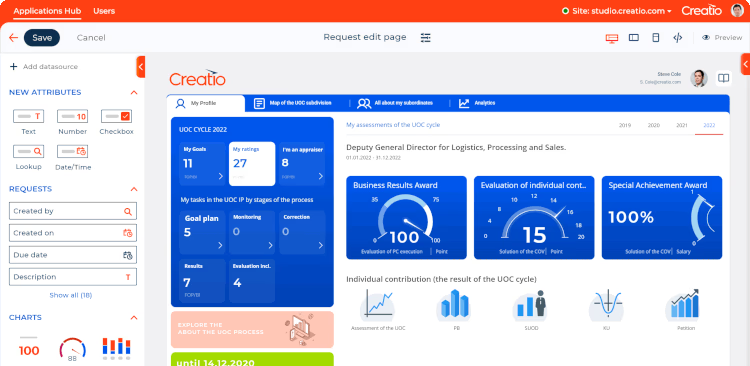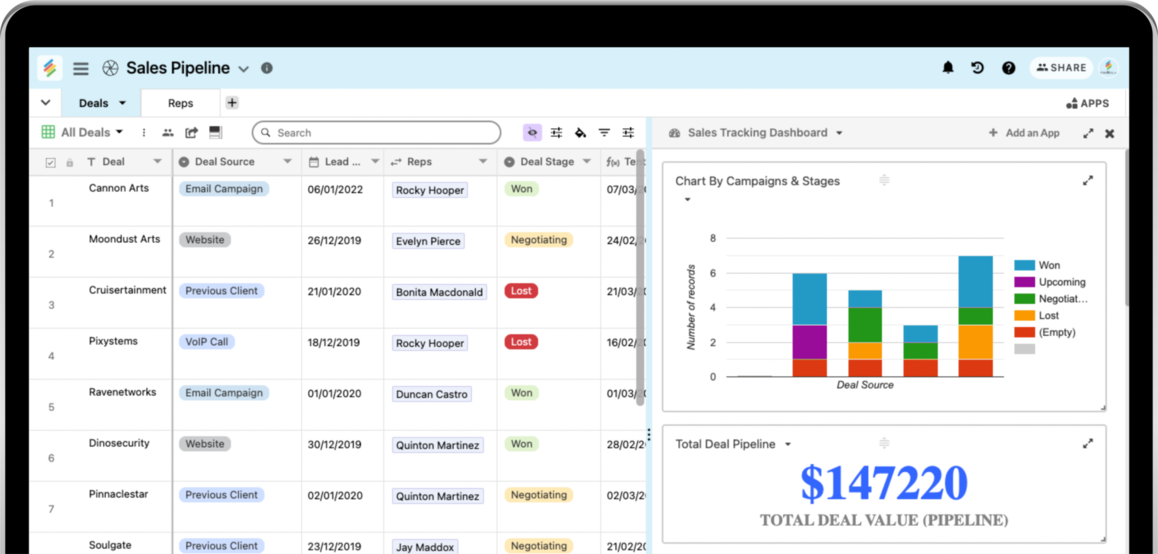Exactly How No-Code Equipment Simplify Open System Data Source Production for Everyone
Exactly How No-Code Equipment Simplify Open System Data Source Production for Everyone
Blog Article
A Comprehensive Guide to Executing Scalable Data Sources Without the Demand for Coding Competence
In the contemporary landscape of data management, the capacity to apply scalable data sources without coding proficiency is becoming progressively necessary for companies of all dimensions. This overview intends to brighten the procedure, concentrating on straightforward devices and user-friendly user interfaces that debunk data source setup. By taking a look at crucial functions, efficient strategies for execution, and ideal methods for continuous management, we will resolve just how also non-technical users can with confidence browse this complicated terrain. What are the important aspects that can genuinely empower these users to utilize scalable data sources successfully? The answers might redefine your strategy to data administration.
Understanding Scalable Data Sources
In the world of modern-day information management, scalable data sources have arised as a critical service for companies seeking to handle raising volumes of details efficiently. These data sources are designed to fit growth by permitting for the seamless enhancement of resources, whether with straight scaling (adding a lot more machines) or vertical scaling (updating existing machines) This versatility is important in today's hectic electronic landscape, where data is produced at an extraordinary rate.
Scalable data sources typically use dispersed architectures, which allow information to be spread across numerous nodes. This distribution not only improves efficiency yet also provides redundancy, making sure information availability even in the event of equipment failings. Scalability can be a vital variable for various applications, including ecommerce systems, social media sites networks, and big data analytics, where user need can vary dramatically.
Furthermore, scalable databases typically include durable information uniformity versions that stabilize performance and reliability. Organizations should consider their certain needs, such as read and create speeds, data stability, and fault tolerance when choosing a scalable database service. Eventually, understanding the underlying principles of scalable databases is important for companies aiming to thrive in a progressively data-driven world.
Secret Functions to Search For
When assessing scalable databases, numerous vital features are extremely important to guaranteeing optimum efficiency and dependability. Think about the style of the data source. A distributed architecture can boost scalability by permitting information to be stored throughout numerous nodes, assisting in smooth data access and handling as need increases.
An additional essential attribute is data partitioning, which makes it possible for effective management of large datasets by separating them right into smaller, more convenient items (no-code). This technique not just improves performance however likewise simplifies resource allowance
In addition, try to find durable replication capabilities. This attribute makes sure information redundancy and high accessibility, lessening downtime throughout maintenance or unforeseen failings.
Efficiency surveillance devices are additionally essential, as they give real-time understandings into system health and wellness and operational effectiveness, enabling timely changes to preserve ideal performance.

User-Friendly Data Source Devices
Simplicity is a crucial element in the design of easy to use database tools, as it enhances ease of access for individuals with varying levels of technical proficiency. no-code. These devices focus on intuitive interfaces, allowing customers to produce, handle, and question data sources without calling for extensive programs understanding
Secret features generally include drag-and-drop capability, aesthetic information modeling, and pre-built layouts that improve the configuration process. Such devices frequently supply led tutorials or onboarding procedures that assist in customer involvement and minimize the knowing curve. Additionally, smooth combination with popular data sources and solutions makes sure that users can conveniently import and export data, even more simplifying procedures.

Additionally, robust assistance and area resources, such as forums and documents, improve the user experience by offering assistance when required. On the whole, straightforward database devices encourage companies to harness the power of scalable data sources, making information administration available to everybody entailed.
Step-by-Step Execution Guide
Exactly how can companies efficiently carry out scalable data sources to satisfy their expanding information demands? The process starts with identifying specific data demands, including the quantity, selection, and velocity of information that will be refined. Next off, organizations should assess user-friendly data source tools that provide scalability features, such as cloud-based remedies or took care of database solutions.
As soon as the ideal tool is selected, the following action involves setting up the data source atmosphere. This includes establishing instances, specifying customer approvals, and developing data structures that straighten with organization goals. Organizations should then migrate existing data right into the new system, making certain information stability and minimal disturbance to operations.
Post-migration, conducting extensive testing is vital; this includes efficiency testing under different tons problems to make certain the system can deal with future growth - no-code. Furthermore, it is crucial to educate team on the data source monitoring user interface to facilitate seamless usage
Best Practices for Administration
Reliable management of scalable databases our website requires a tactical technique that focuses on ongoing monitoring and optimization. To accomplish this, companies need to apply robust tracking devices that supply real-time insights right into data source efficiency metrics, such as question feedback times, resource utilization, and purchase throughput. Regularly evaluating these metrics can help determine traffic jams and areas for renovation.

Routine back-ups and catastrophe recovery strategies are important to secure data stability and schedule. Establishing a routine for examining these backups will make certain a trusted healing process in instance of an unexpected failing.
Furthermore, performance adjusting must be a continuous process. Changing indexing strategies, maximizing inquiries, and scaling resourcesâEUR" whether vertically or horizontallyâEUR" will certainly help preserve ideal efficiency as use demands advance.
Finally, fostering a society of understanding sharing amongst group members will make it possible for constant knowing and adjustment, guaranteeing that the monitoring of scalable databases remains efficient and reliable in time.
Verdict
Finally, the execution of scalable databases can be successfully accomplished without coding experience with the usage of user-friendly devices and intuitive user interfaces. By sticking to the laid out methods for setup, information migration, and efficiency screening, individuals can navigate the intricacies of database monitoring easily. Highlighting best techniques for continuous maintenance and partnership additional improves the capability to take care of scalable data sources successfully in a swiftly evolving data-driven environment.
In the contemporary landscape of data management, the ability to implement scalable databases without coding competence is ending up being significantly crucial for organizations of all sizes.In the try these out realm of modern data monitoring, scalable databases have emerged as an important remedy for companies seeking to deal with raising quantities of info successfully.In addition, scalable data sources often feature robust data consistency designs that stabilize efficiency and reliability.Exactly how can companies effectively implement scalable databases to meet their expanding check that information demands? Next off, companies need to evaluate user-friendly data source devices that offer scalability functions, such as cloud-based remedies or took care of data source solutions.
Report this page